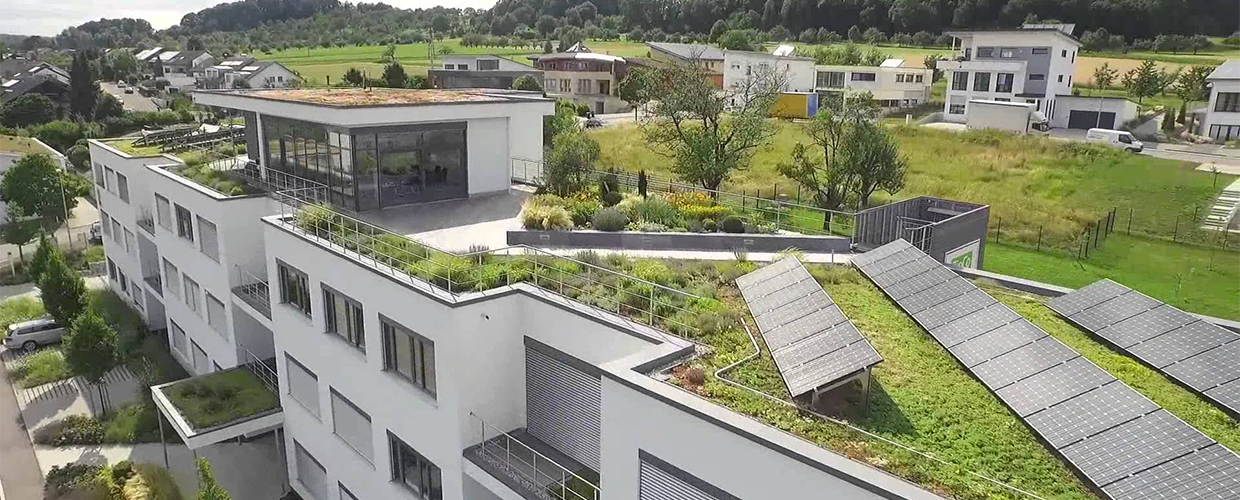
Roofing for a Sustainable Future: Choosing Eco-Friendly Materials and Practices for Your Business
Conventional roofing materials and practices have dangerous side effects on our planet. They often involve the extraction of non-renewable resources. Furthermore, they produce a lot of waste. They are a contributor to Earth’s landfill problems and pollution. On top of that, they have a shorter lifespan. Thus, they must be replaced frequently.
Eco-friendly alternatives help reduce the carbon footprint, cut waste, and promote biodiversity. They also improve temperature regulation, leading to long-term savings and reduced utility bills. Many viable roofing materials are built to last.
Concept of Sustainable or Eco-Friendly Roofing
Viable roofing has a significant positive effect on our planet. It involves sourcing materials we can divert from regular waste or find new uses. It promotes long-term sustainability and enhances energy efficiency as a result.
Alternative roofing goes beyond energy efficiency. It addresses important environmental concerns. It aligns with a global movement towards responsible business practices. Businesses are now choosing materials and methods that help save energy, counteract climate change, and protect the environment.
Benefits of Planet-Friendly Roofing
Sustainable roofing is energy efficient. It also helps cut pollution and counteract the effects of climate change. It has far better insulation and temperature regulation compared to traditional roofing options. It saves significant long-term costs since energy-efficient roofing reduces utility bills.
Choosing viable roofing signifies our commitment to saving our planet. It aligns with the need for corporate social responsibility and conscious business practices. Governments and certifying bodies often encourage these choices through tax benefits and certifications. These incentives make eco-friendly roofing a strategic and rewarding choice for businesses.
Green Roofing Materials
Cool roofs are green roofing materials that reflect sunlight and absorb less heat. They help regulate indoor temperatures. They reduce the need for air conditioning and provide a cooler environment.
Green roofing also incorporates living vegetation. It also creates urban biodiversity by providing birds, insects, and plant habitats. As a result, it aids in lowering air pollution and managing flooding.
Recycled metal, solar tiles, and cool roof coatings are a few examples of materials for sustainable roofing. These materials all contribute to energy efficiency and resource conservation. It is a far more conscious approach to building and maintaining structures. It stays consistent with the goals of ecological stewardship and responsible resource management.
Energy-Efficient Roofing Practices
Energy-efficient roofing practices are essential for indoor comfort, productivity, and customer satisfaction. Cool roofs, designed with reflective properties, reduce heat absorption. They keep buildings cooler without relying on air conditioning. Cool roofs reduce energy consumption, resulting in lower utility bills. They are a more sustainable operational model.
Effective temperature control also increases energy efficiency and prolongs roofing materials’ lifespans. Cool roofs prevent premature wear and tear. They save businesses money on maintenance and replacement costs.
These practices extend beyond individual companies. They impact the surrounding urban environment by mitigating the urban heat island effect, thus creating more sustainable and comfortable urban spaces.
Choosing the Right Roofing Contractor
When selecting a contractor, consider their track record, client testimonials, and affiliations. Experience in eco-friendly roofing is crucial, as it showcases successful installations. In-depth knowledge of alternative roofing materials and techniques is essential for optimal energy efficiency and environmental impact.
Certifications are also notable signs of a contractor’s regard for sustainability. LEED-certified buildings could be eligible for tax breaks and rebates. Meanwhile, ENERGY STAR® certification shows commitment to energy-efficient practices. These certifications ensure your roofing project meets environmental standards and maximizes potential benefits.
Emerging Technologies and Trends in Eco-Friendly Roofing
The demand for viable roofing solutions gives rise to innovative technologies. Innovations like solar-reflective coatings and integrated solar panels are currently at the forefront. Other trends include urban green roofs and smart energy monitoring integration. Roof hatches that enhance natural lighting, like the BA-GRH-DO domed roof hatch – galvanized steel, are also an option.
Understanding these trends helps businesses align their projects with the latest advancements. It ensures environmental benefits and helps them stay ahead of industry standards. Staying updated on these developments allows firms to adopt cutting-edge solutions for a sustainable future.
Conclusion
Sustainable roofing is essential for businesses as it aligns with societal choices and promotes a responsible ethos. It offers long-term cost savings, energy efficiency, and resource conservation. Companies can now focus on sustainability by contributing to global efforts to save the environment.
Integrating cool roofs, using green materials, and partnering with certified contractors positively impact the environment. At the same time, they secure the longevity and efficiency of the structures. By exploring these options, companies can build a future where business success coexists with environmental well-being.